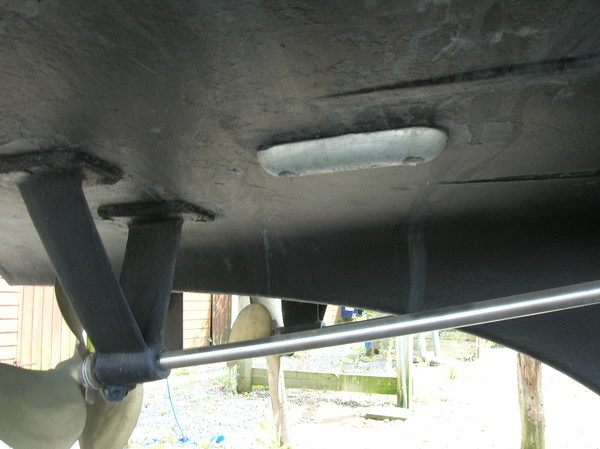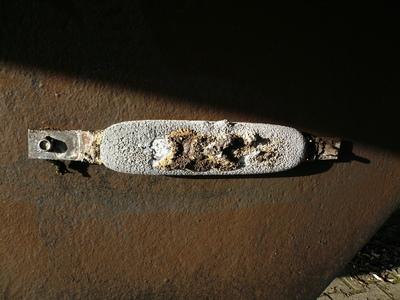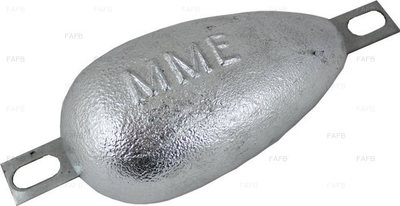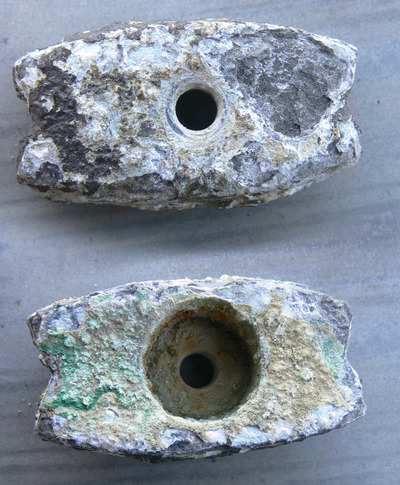
View all banners
FAFB will never call you and ask for your credit card details over the phone. If this happens, hang up!


The bane of a boatman’s life is the inevitable natural occurrence of corrosion to the drive, hull and other exposed metal parts of a vessel (including props, rudder stock and skin fittings). The science is simple; metals exposed to water, whether this is fresh, brackish or sea, are vulnerable to the electrochemical process of aqueous decay. This can be from being in direct contact from the water or even from being exposed to atmospheric conditions in dry dock.
Electrolytes in water are drawn to metal surfaces and the combination of these factors causes the chemical reaction of corrosion to take place and eventually to destroy the composition of the metal.
The rate of this process varies depending upon a number of factors including the type of metal being exposed, the pH level of the water and the duration of exposure. Whilst these factors can be monitored and controlled the decay is an inevitability which requires constant vigilance and maintenance.
Fibre glass hulls and timber boats are not subject corrosion by the same electrochemical process but you should be aware that any external features made of metal such as skin fittings, props and rudder stock are all vulnerable.

There are plenty of ways to prevent damage to your engine, prop shaft and other metallic elements of your boat including:
Protective paint
It’s a given that any vessel constructed from bare and untreated metal will rust more quickly than one which is treated. It’s therefore imperative that all bare metal is treated with a coating of protective paint. When applying the coat, care should be given to ensure that the entire surface has been treated and, to achieve lasting and effective protection, that this is inspected and repaired on a regular basis.
Using alternative materials
Where possible, consideration should be given to the use of alternative materials used in the construction of your boat. Alloys such as cupro-nickel, titanium and other copper based alloys, as well as other composite material, could offer a solution to the threat posed by corrosion. Strength, safety, durability and damage tolerance must all be weighed up before using such an alternative in any given application.
As their name might suggest, sacrificial anodes are used in proximity to the metals they are designed to protect by offering a more negative electrochemical potential as a result of the metal from which they are made. This results in the sacrificial anode being ‘consumed’ before the surrounding, and less active, material corrodes.
Sacrificial anodes designed specifically for boats were once solely made from zinc, a weaker material with higher levels of electrons (thus corroding faster) and, as such, anodes are often known as ‘zincs’. Nowadays, anodes are made from many more metals including magnesium, aluminium and alloys such as silver chloride. Each type of anode will offer various protective qualities in different aqueous environments and the choice of material will depend upon the application for which you are seeking protection.

It would seem common sense to choose an anode based on its highest negative electron value as this would seem more likely to offer the greatest protection but the same qualities which make it more attractive to corrosion also make it a less durable selection. So, whilst magnesium offers up more electrons, these are ‘consumed’ faster and require replacing sooner. Depending upon the environment in which you are using them magnesium anodes could offer as little as 50 days protection compared with zinc at 150 days or aluminium having 225 days.
So how do you choose the right metal for the job?
Whilst the initial capital outlay will always have a bearing on your selection so too should the cost of maintenance as cheaper anodes may deteriorate quicker making their lifecycle cost over a year more expensive then if you were to pay up-front for anodes with greater longevity. The type of water you are exposing your boat to will also have a bearing as zinc anodes have a propensity to form an insulating film over them when used in freshwater making them less effective.
You should also consider the type of metal that you are wishing to protect and ensure that the electrochemical properties of the corresponding anode are negatively lower.
As a rule of thumb boats with steel or GRP hulls would be better suited with zinc anodes in salt water and magnesium anodes for fresh water. Wooden hull boats should avoid magnesium anodes as they can damage the timber surrounding the fixings.
Finding the right anodes is straightforward using the search facility on Find a Fishing Boat or by visiting Gael Force Marine
Anodes are secured to those elements of a boat which require protection and must be replaced on a regular basis to ensure protection on a continual basis.
Anodes should be checked as part of a regular annual inspection and more frequently is possible. The surface of the anode should be free from corrosion deposits (seen as chalky or flaky film) and that these are not covered by any protective paints or coatings. It is recommended that the anodes are replaced where more than half of the working surface is spent.
Anodes are installed via the use of straps or lead wires which can be connected to the structure being protected and these must be welded or installed with mechanical connections.
When replacing sacrificial anodes care should be taken to ensure that the backing sheet, washers and nuts are also changed. Any exposed fixings should then be greased or painted after being installed.
